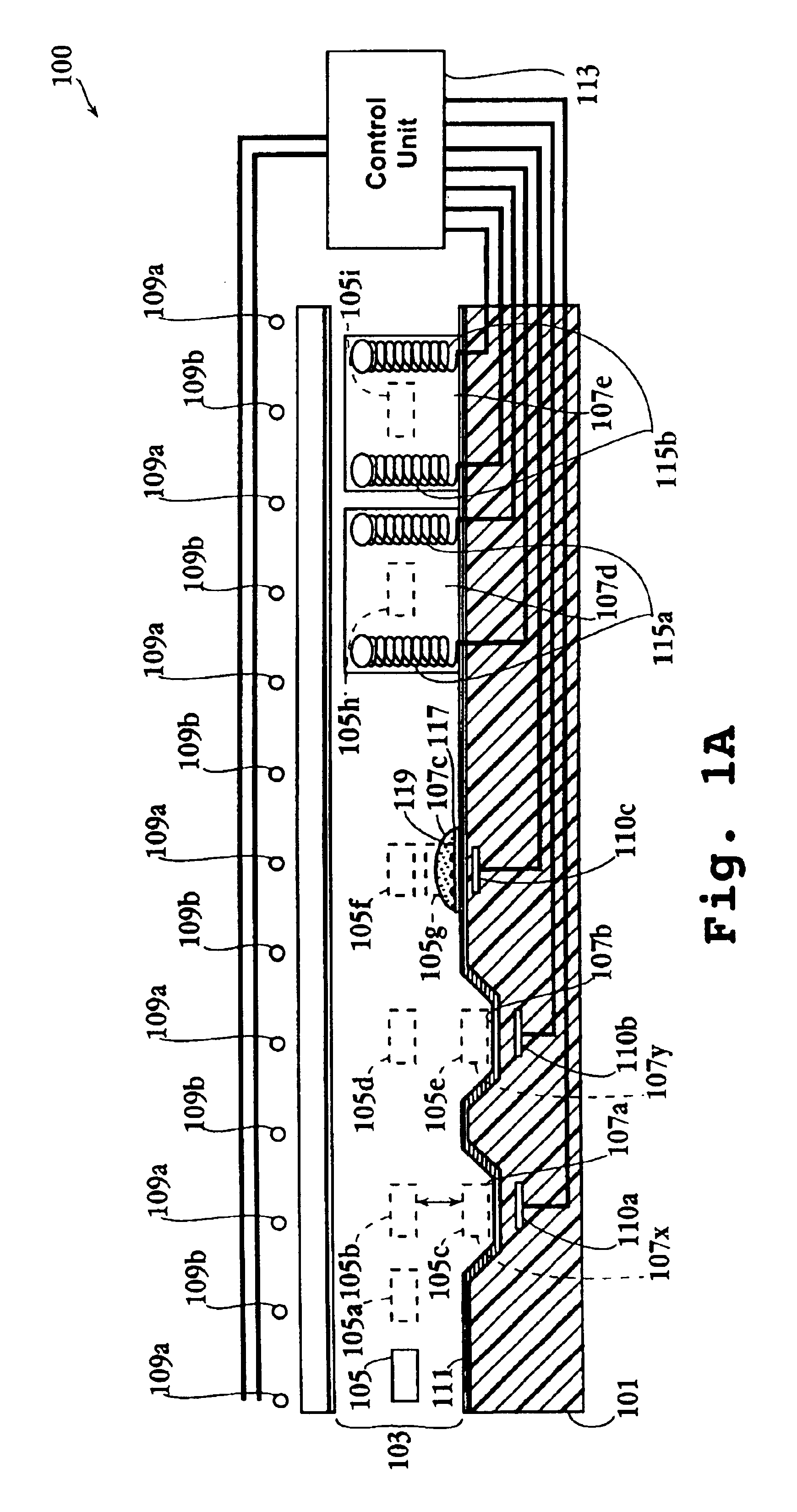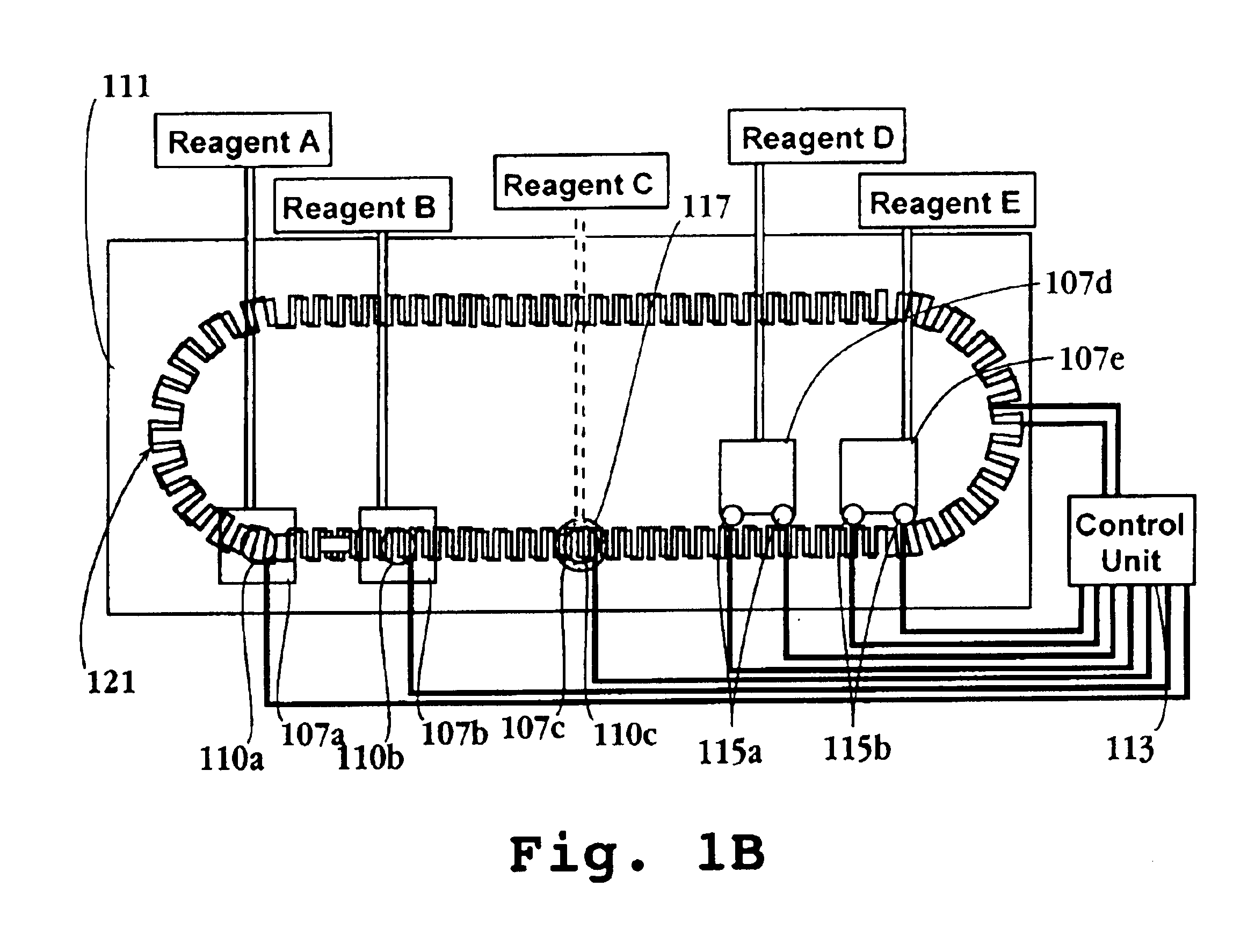Microlaboratory devices and methods
- Summary
- Abstract
- Description
- Claims
- Application Information
AI Technical Summary
Benefits of technology
Problems solved by technology
Method used
Image
Examples
example 1
Functional PCR Test of DNA Attached to a Microparticle
Plasmid DNA at different concentrations was adsorbed to different, approximately 250 μm, rectangular silanized neodymium-iron-boron magnetizable microparticles in PCR buffer conditions. The microparticles were then independently washed, and then subjected to elution conditions using a high salt elution buffer. Aliquots of the liquid samples containing eluted DNA, if any, were transferred to independent PCR tubes. A cocktail of PCR primers, dNTPs and other PCR reagents were added to the tubes and PCR was performed. FIG. 35 depicts the results of the experiment demonstrating that DNA may be selectively acquired and released by a microparticle suitable for use in certain embodiments of the present invention.
example 2
Flow Chart for Use in Tuning Certain Embodiments
FIG. 36 depicts a flow chart useful in tuning system parameters for certain embodiments.
example 3
Size Specifications for an Embodiment Such as Depicted in FIG. 26
Driving Traces:
40 micron magnet wire8 mm wavelength, square wave pattern2 traces, offset 90 degrees spatially
Bias Traces:100 micron magnet wire2 mm inner diameter, 3.5 mm outer diameter, 6 turns (circuit with poppers)2.5 mm inner diameter, 4 mm outer diameter, 6 turns (linear track)2.8 mm (0.11″) above driving traces
Pop-Out Coils100 micron magnet wire7 mm outer diameter, 1 mm inner diameter, 1.5 mm thickfree standing coils; typical packing factor 70%See drawing for placement relative to pop-out reservoirs
PUM
| Property | Measurement | Unit |
|---|---|---|
| Order | aaaaa | aaaaa |
| Dipole | aaaaa | aaaaa |
Abstract
Description
Claims
Application Information
 Login to View More
Login to View More - R&D
- Intellectual Property
- Life Sciences
- Materials
- Tech Scout
- Unparalleled Data Quality
- Higher Quality Content
- 60% Fewer Hallucinations
Browse by: Latest US Patents, China's latest patents, Technical Efficacy Thesaurus, Application Domain, Technology Topic, Popular Technical Reports.
© 2025 PatSnap. All rights reserved.Legal|Privacy policy|Modern Slavery Act Transparency Statement|Sitemap|About US| Contact US: help@patsnap.com



